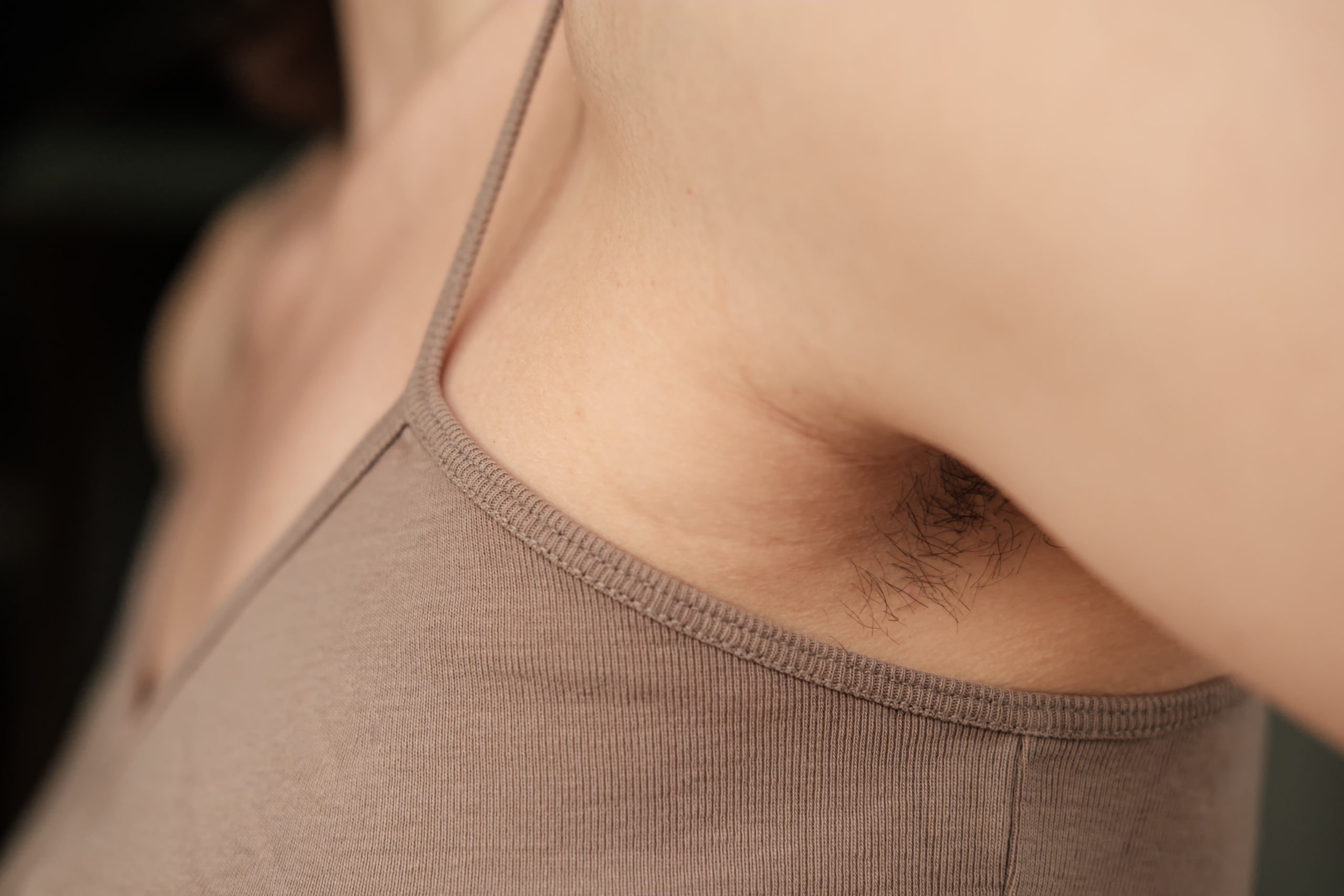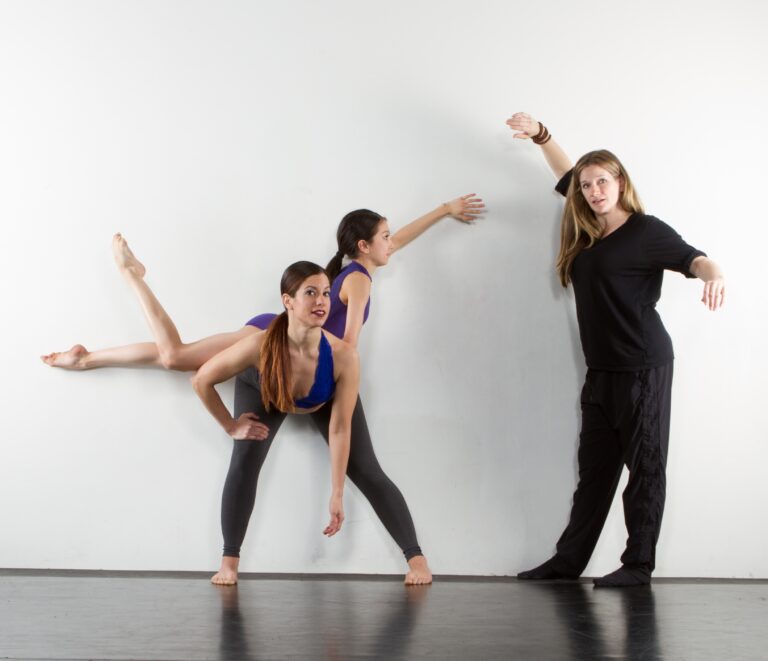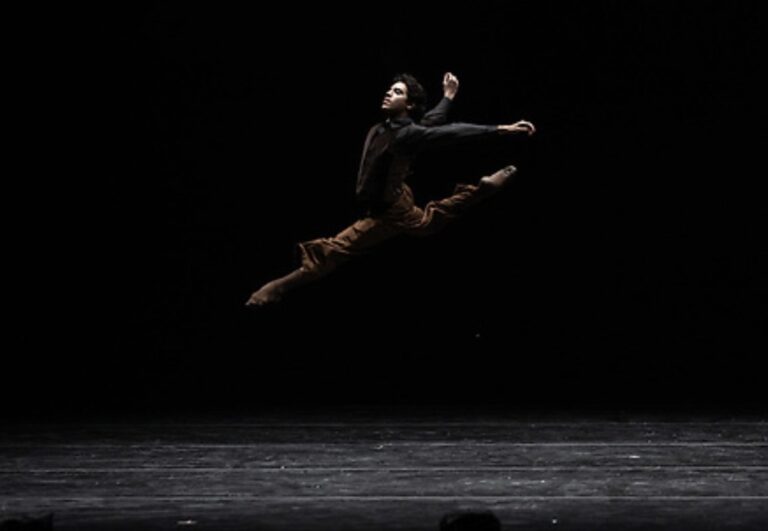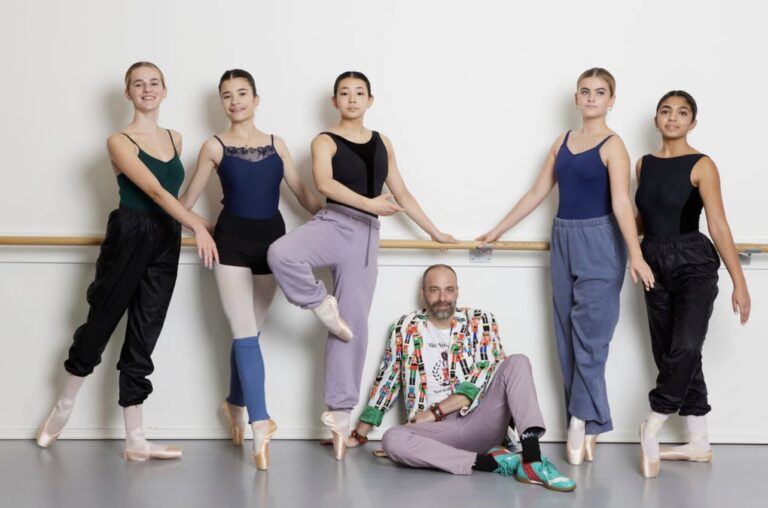
Adriana Pierce remembers how worried she was the first time she had to wear a leotard onstage without tights. “It was Liam Scarlett’s Viscera, for Miami City Ballet. We had an in-studio costume run-through and it was really scary. Luckily, we had known in advance, so we could all get a wax or whatever, but I remember feeling very preoccupied and exposed,” she says.
Pierce, now a choreographer, teacher and creator of the project #QueerTheBallet, also remembers the dressing-room chatter on the maintenance of body-hair removal: “It was this back and forth all the time. ‘When are you going [to wax]? You have to wax in advance because you’re gonna get irritation for a few days. If you get it done now, do you have to go again halfway through the run?’ You have to let the hair grow in order to get it waxed again, but shaving causes irritation too.”
The world of dance, particularly classical forms like ballet and modern, harbors both unspoken and spoken rules regarding the removal of body hair. Armpit hair in a tutu? Pubic hair showing outside of a leotard line? Back hair? All huge no-no’s. “There’s intense pressure to look like what is wanted, the ideal aesthetic,” says Pierce. “No one ever said to me, ‘Shave your bikini line.’ That never happened. But what you see is what you feel like you’re expected to adhere to,” says Pierce. “And the pressure for women to have hairless bodies has a really problematic history. The pressure to be hairless outside the studio, as per the images I saw in the media, was the same as being inside the studio—no armpit hair, no bikini line—and so I thought, ‘OK, this is what’s expected of me.’”
For so long, dancers, both professional and pre-professional, have internalized this expectation. And for many decades, dance’s subjective beauty norms with regard to body hair were mostly in step with mainstream culture. But glance at social media posts or a magazine spread today and you will see that Gen Z has a less homogeneous approach to body hair, treating natural differences and personal choice as new markers of beauty. A 2020 Allure podcast exploring the history of why we even have body hair asked the question: “If having hair is so crucial to the function of our bodies, why have we been removing it for hundreds of years?” And a more recent article in The Guardian last fall made the question dance-specific: “…as dance becomes more diverse, should it stop policing what grows naturally?”
While there are some companies taking more-progressive stances when it comes to how they expect their dancers to present themselves, by and large, body hair remains taboo, both to have and discuss. This generational and cultural divide has the potential to create friction in the studio, particularly as dance aims to reform itself as a diverse and inclusive form. All of which brings the question: How do you talk about this intimate subject with your students—and should you?
Bursting the Binary Bubble
Binary thinking comes up a lot in language around body hair: good vs. bad, beautiful vs. ugly, clean vs. dirty, presentable vs. messy. Interwoven with many of these beauty preferences are negative assumptions about body hair that can send harmful messages to students, particularly those who are of color, gender-nonconforming and female-identifying.
“Growing up in the ballet world, black hair was policed differently than just hair,” says Michael Snipe Jr., ballet teacher and rehearsal director at the New York City public arts school Ballet Tech and an advanced clinical intern at psychotherapy private practice Equity Therapy. “It started in high school with them telling me if I were the prince, I’d have to cut my hair, I couldn’t have twists. I was turned down on a job for having an Afro, and back when I was at Ailey II you even had to have a smooth face.”
For Pierce, there is frustration that so many expectations, like removing body hair, are overwhelmingly placed on young girls and women. For dancers of color like Snipe Jr., some of the coded language they hear applies to both the hair on their bodies as well as the hair on their heads. And for nonbinary or gender-nonconforming students, these frameworks seem to dismiss their identities completely.
“The fundamental thinking that comes with a lot of our training is a very dichotomous way of viewing right and wrong,” says Mario Ismael Espinoza, a dancer and clinical social worker at The Actors Fund Dancers’ Resource Program. “My work with artists has taught me that this is both useful and really detrimental. We know that the “perfect” arabesque is directly behind you and in a turned-out position with a turned-out standing leg, and if it doesn’t look like that, it’s not right. And so that starts to translate to a lot of other things.”
While such black-and-white thinking may be valuable when it comes to teaching dance technique, it neglects the gray areas that make us individuals and can lead to judging choices and making assumptions about students’ bodies. The fact is, some students will prefer to remove their body hair, whereas others won’t for personal or even religious reasons. Some students will have access to razors and the resources to pay for waxing services; others won’t. None of this has to mean that a student is unhygienic or messy. “Maybe a student has seven or eight siblings and doesn’t have the privacy to remove body hair,” says Snipe Jr. “Or maybe they have been molested before and the suggestion of having to shave pushes them to a breaking point. There are many ways for our assumptions to go wrong.”
Acknowledge Your Influence
So often the conversation is student-focused: How do we prepare students? But Espinoza believes that the front of the room needs to be addressed too: “There are a lot of people talking about body positivity, and that’s beautiful in theory,” says Espinoza. “But if we want to transform the culture of the dance studio, we have to be able to see what it means.”
The theory of body positivity promotes the acceptance of all bodies, including the hair on them. It asserts that all people deserve a positive body image regardless of any one society’s ideal shape or appearance. “I’m all about representation. It matters,” says Snipe Jr., who admits his appearance is different from most of his colleagues’. “I sometimes paint my nails, get extensions in my hair, go a month without shaving my face. I also have a sleeve tattoo on my arm. But I’m secure in who I am and how I look, and I want to share that.” While in the past, some of his personal grooming choices were questioned, it’s clear that they don’t negatively affect his abilities and even come with benefits for the students in his class.
“We also need to look at how teachers are showing up in the studio,” says Espinoza. “They are the ones in a position of modeling, correcting, shifting and challenging. But it’s unfair to look at the teacher without the context of the studio, without the context of the parents, as they are sandwiched between the responsibility to the students and the expectation of the larger institution.”
Challenging such rigid structures and subjective ideas of beauty can feel overwhelming, but the work can begin with a simple exercise. Espinoza recommends that dance teachers take some time to self-reflect on what it means to be body positive themselves and see how that reflection translates into their speech, dress and behavior within the classroom and in their daily lives. In other words, ask yourself: “How am I embodying body positivity and modeling it for my students?”
When Espinoza talks to artists about mental health, they often ask these three questions: “Are you an advocate for body positivity?” “Do you believe all body types are beautiful?” “Do you believe your body is beautiful?”
“The answer to the first two questions is always yes. And to the last, the answer is almost always no,” Espinoza says. “There’s this really interesting thing that we are able to offer positivity to others, and advocate for it, but it’s really hard to offer ourselves. And while this isn’t scientific research, it tells me there is a truth we can lean towards.”
If your answers follow this pattern, Espinoza recommends doing the personal investigative work to find out where the gaps are between philosophy and lived experience.
The Studio as a Safe Space
While the mention of body hair may seem like a fringe issue to some, compared to larger challenges such as racism, sexism and abuse of power, there is an intersectionality between them all.
“When I’m teaching young people, I’m trying to empower them so that they feel safe and in control over their own bodies,” says Pierce. She always asks permission to touch students before making a hands-on correction. “Though that’s not directly related to body hair, we’re setting up a dynamic in the space that gives the student the ability to set boundaries and limits, to make choices and to give and take away consent.”
Espinoza agrees, noting that such safety—which includes an acceptance of body hair and differences in body types—creates a foundation of self-confidence and establishes a boundaries practice that can be useful when students move out of the nest and encounter more challenging environments. “If the dancer doesn’t have the ability to say ‘This isn’t right for me’ in the studio, then they’ll have a hard time saying it anywhere else, because they haven’t practiced it,” says Espinoza. “It will endow them with the self-confidence to advocate for themselves in a space where nobody else is doing it.”
For Snipe Jr. the key is to give students the tools to be able to understand difference, adapt (if that is what they choose), and be OK. “Wherever you might end up, whoever you might work with, there will be different views. For certain roles or characters, a choreographer may ask you to change things about your appearance. I want them to be able to have the confidence to have those conversations and not be destroyed,” says Snipe Jr.
To Be Uniform or Not
While some schools have already begun discussing ways to alter dress codes to accommodate differing skin tones and gender expressions, it’s not too far out there to think about how a uniform might accommodate differing approaches to body hair.
“I’ve gotten a lot of feedback from young people about how the uniforms we wear in the studio has been very triggering in terms of gender dysphoria or just like feeling like what they’re wearing constantly has nothing to do with the way that they feel on the inside,” says Pierce. “At the same time, I know that discipline and uniformity is also important.”
Balancing what can feel like competing demands between the needs of the individual with the demands of a classical artform may be as simple as offering a few more options. Perhaps it is considering adding a long-sleeve leotard or an opaque tight into the usual mix of camisole leotards and sheer tights, for students who are not ready or comfortable with the idea of removing or showing off hair. “Options could be an easy way to alleviate some of that pressure,” says Pierce. “Likewise, when it comes to costumes, it’s a conversation for me. I ask both students and professionals, ‘What do you feel most comfortable in?’”
The Problem With ‘Should’
You might still be wondering: Should you discuss body hair with students?
“The word ‘should’ is always a big, red flag,” says Espinoza. “It’s going to be different from school to school, from classroom to classroom. The same things that create the sense of safety in the studio, namely teaching students about consent and boundaries, create the space for students and teachers to have hard, uncomfortable conversations.”
If there is an issue around body hair you feel you need to address, Snipe Jr. advises you to approach it with sensitivity, normalize what the adolescent is going through and be open to learning about where each individual student is coming from. “Treat each conversation individually, if there needs to be a conversation,” Snipe Jr. says.
And don’t force it. “I think I would have been mortified to have to discuss it as a teenager,” says Pierce. “But it would have been helpful to know that the ball is in my court, if I had wanted to. So I let students know that my door is open.”
Ultimately, the body-hair dialogue isn’t about solving a problem, but engaging with and celebrating difference. “Let’s encourage dance to look all the ways that it can look. And body hair is absolutely a part of that,” says Pierce. “It won’t happen overnight, but I hope the young people who are coming up now are going to grow into a world where they can find their own place and make it more inclusive.”




